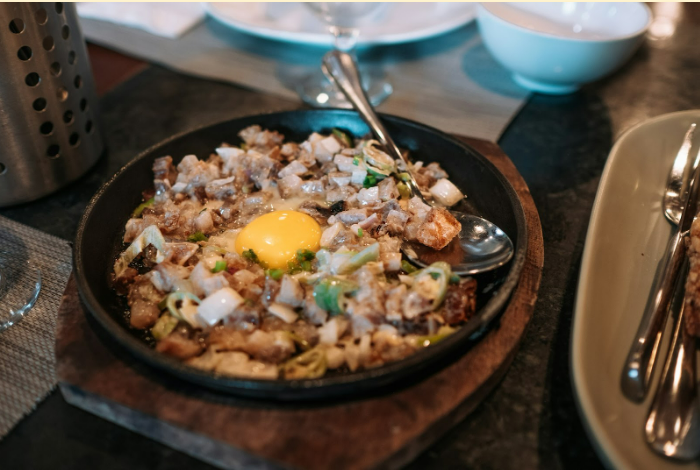A Quick List of Traditional Filipino Dishes by Region
To appreciate the diversity of Filipino cuisine, it’s essential to understand the geography of the Philippines.
The country is divided into three major island groups: Luzon, Visayas, and Mindanao. You’ll find plenty of natural resources and cultural traditions across these islands, which natives have made delicious dishes out of.
- Ilocos (Northern Luzon)
Known for its simple yet flavorful dishes, Ilocano cuisine features a variety of preserved meats and vegetables. Its standouts include soupy pinakbet, a mixed vegetable dish seasoned with fermented fish paste (bagoong). There’s also bagnet, a crisp, deep-fried pork belly similar to lechon kawali, but prepared in the uniquely Ilocano way.
- Bicol Region (Southern Luzon)
Bicolanos love chili and coconut milk so much. They’re used for spicy dishes such as laing (stewed taro leaves combined with pork, shrimp, coconut milk, and chili) and Bicol Express (pork stewed in coconut milk with shrimp paste and hot peppers).
- Western Visayas
If you love soup but have grown tired of chicken noodle soup, you’ll enjoy Iloilo’s batchoy. It’s a hearty dish containing egg noodles, beef, pork, liver, marrow, and intestines. Crushed chicharon and garlic are added for a truly tasty dish.
Bacolod’s kansi also comes from Western Visayas. This beef marrow soup derives its distinctive sour and savory flavor from the local souring fruit known as batuan.
- Central Visayas
Cebu is well-known for its take on lechon, a whole roasted pig with crispy skin and juicy meat. Lots of lemongrass, onions, and garlic are stuffed into the belly, and sea salt is rubbed all over the pig. Fiestas and family gatherings put lechon at the center.
- Mindanao
Many dishes from Mindanao are rooted in the region’s Muslim culinary heritage and demonstrate its similarities to that of Southeast Asian countries, such as Malaysia.
Piyanggang manok is one dish that highlights this influence. It features chicken stewed with blackened coconut meat and palapa, a condiment containing ginger, chili, and sakurab, until tender and then grilled. Piyanggang manok is somewhat elusive, but its flavor makes the search worthwhile.
The Perfect Places to Enjoy Regional Filipino Dishes
- Community gatherings
- Food stalls at food festivals
- Online cooking classes
- Local organizations and cultural centers hold Filipino heritage nights (You may see people learning to make regional favorites like piaya at these events.)
Tip: United Tribes lists upcoming Filipino-led events in its online event directory. Use our platform to know what’s happening in your area.
Alternatively, you can find top local restaurants in our online business directory.









